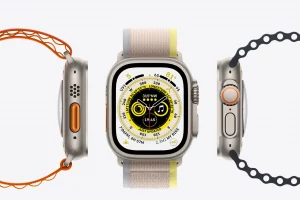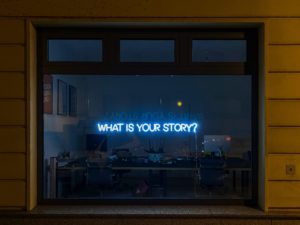Apple’s Better, Special, Different

Watching the Apple keynote this week – and reading this – all highlighted the importance of starting with the product to drive differentiation. Everything Apple does is about difference – not just to others in the market but to what preceded it.
Prices then go up over time and are a result of innovation.
As Tim Cook said in his interview with BusinessWeek:
“We never had an objective to sell a low-cost phone,” says Cook. “Our primary objective is to sell a great phone and provide a great experience, and we figured out a way to do it at a lower cost.”
And critically, the product and pricing are optimised for a specific market – where the Apple ecosystem is most vital – America. As Ben demonstrates well:
The Apple ecosystem is of most value in the American markets first, the European markets next, and the Asian-style markets last … therefore, it’s very rational for Apple to optimise its pricing for the American-style markets, and the most logical price is $550/$99.
What Ben is getting at in all of this is a set of marketing fundamentals I see most marketers, miss:
- Price to product differentiation – not just relative to market but also prior product instantiations. Don’t price solely to category entry point or pricing dynamics.
- Pricing must exist in the context of broader market dynamics in most cases, but not all. There is little logic to the iPhone Pro pricing relative to other competing products. It is priced on its merits as a “luxury” device. Pro is always the misnomer in tech – it’s code for luxury.
- Pricing substitution isn’t necessary – each Apple product is priced relative to the market and its brand effect. iPhones don’t sell for less than they are worth in the hope you will buy iPods and other services. There is no “hope” in Apple’s strategy.
Start with: product (innovation & differentiation), position, price. Not with price, the product, then position.
Effectively Apple’s brand power is the point of leverage and “strategy” insurance. The massive investment in the Apple brand creates the halo that protects pricing power and ensures demand. But without effective product innovation, priced and packaged to the core target market, the brand wouldn’t make the difference up.
Stratechery is a great read and well worth paying for.
Creating Content in Notion
TL’DR: Don’t think of note-taking in Notion as about creating a note for every idea, piece of work, or event. Think about one note housing many notes within it. All are searchable and discoverable.
Notion is unlike most note-taking apps – because it isn’t one. It’s a database, essentially, but don’t let that put you off. But it does mean you can create notes differently.
Simply put, you can create depth to every note by creating pages within a page.
Here’s how it works. Let’s say I’m producing content for my company. Traditionally every piece of content might be a new note in say, Apple Notes or a document in Google Docs.
With Notion, I have a master list of all the content I am working on. Each of these appears in my master content page. As I develop that content, I simply create a new page within the content master. I share the master once with the team so they can see everything I am working on.
Then, with a click, I can convert that to a board view and develop a workflow on the fly, easily arranging the content by it’s stage of development. And I’ve got one central archive for all the content we have produced.
It’s also simple and easy to create templates in Notion, so you can quickly populate all the stuff you need to produce great content. This might include keywords, categories, affiliate links and more.
And, just get Grammarly – it works great with Notion.
Check out this Notion video from Thomas Frank or swim through the Notion YouTube channel.
A Great Message For Kiwi Companies
Are you an exporter or a global company? It’s a subtle but very important difference. NZ tech companies have been confused on this one for too long.
Brand NZ does little for the NZ technology enterprise, so trying to derive some advantage in our clean, green, pure image is a waste of time. If anything it reinforces distance, remoteness and high cost. That’s not to say those values don’t work for our dominant industries – like agriculture and vodka production.
Don’t get me wrong, there is lots to love about being a NZ company with a bunch of dedicated Kiwis powered by Kiwi values. But that doesn’t mean you need to feature it.
At the end of the day, what we export in tech doesn’t weigh nearly as much – often it’s lighter than air. And more than often, while the IP is generated in NZ, the product is normally made in all the usual places. We in effect export ideas to people who make things for us and then export them to our customers who in term export the final product to their customer. You get them idea, if we are all exporters, why make the point?
Al Munroe of Next Window hits this on the head:
"It’s important that New Zealand start-ups see themselves as global companies, because it may sound good to be a leading high-tech exporter [in New Zealand] but to the rest of the world it sounds pretty naff," he said.
Monro said being a New Zealand exporter gave potential customers and investors overseas the impression that their focus and scale was at a low level.
"I rail against the term export," he said.
Asked how New Zealand start-ups could escape being categorised as lowly exporters, he said they needed to be careful how they positioned themselves.
"If you position yourself as an emerging global company, it sends a completely different message."
Next Window is poised to become to of NZ’s tech giants. (And they are a supplier to Dell.)
Tracking News In Cyberspace
Interesting read from the NY Times on tracking news in Cyberspace. And more here.
MORE BLOGGERS THAN PROGRAMMERS
Mark’s new column is worth a read…
The best studies we can find say we are a nation of over 20 million bloggers, with 1.7 million profiting from the work, and 452,000 of those using blogging as their primary source of income. That’s almost 2 million Americans getting paid by the word, the post, or the click — whether on their site or someone else’s. And that’s nearly half a million of whom it can be said, as Bob Dylan did of Hurricane Carter: "It’s my work he’d say, I do it for pay."







